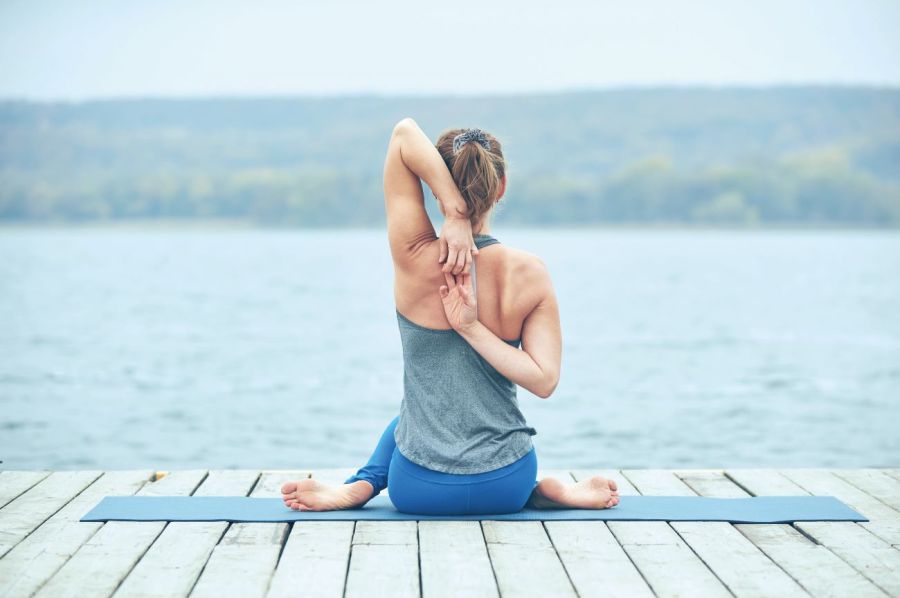Discover the best yoga poses and exercises to stretch and strengthen your back for better fitness performance…
If you’re one of the 10 million Brits with back pain, chances are your workouts are suffering. Need a bit of extra puff to power your run? Your back muscles are key to breathing well. Want to lift a dumbbell over your head? Yep, the muscles in your back help you raise your arms, too. Little surprise, then, that when they’re weak or tight, it’s harder to meet your fitness goals.
Related: What is yoga? Benefits & basic principles for beginners
Along with a weak core or poor posture (think too much slouching over a screen), the health of your back is compromised by tight hamstrings, weak back muscles and poor lifting technique. In fact, even prolonged stress and anxiety can risk placing added strain on your back.
But learning the best yoga poses to strengthen the muscles that support your spine will help keep your back and upper body stable, relieve back pain and prevent further injury. Stretching them, meanwhile, builds range of motion, also prevents injury, reduces muscle soreness and keeps them long and flexible.
Related: Yoga for core strength: best poses for stronger abs
Back to basics
Getting to know your back is a good place to start. You’re probably familiar with your trapezius, the superficial diamond-shaped muscle that runs from the back of your neck to your mid back (it helps with posture and raising your arms).
Other surface muscles include your lats (latissimus dorsi), which work on your arms and shoulders, and the rhomboids, responsible for drawing your shoulder blades towards your spine. The intermediate muscle layer includes erector spinae, and if you go a little deeper, you’ll find the intrinsic layer of muscles, which stabilise the spine and play a role in proprioception.
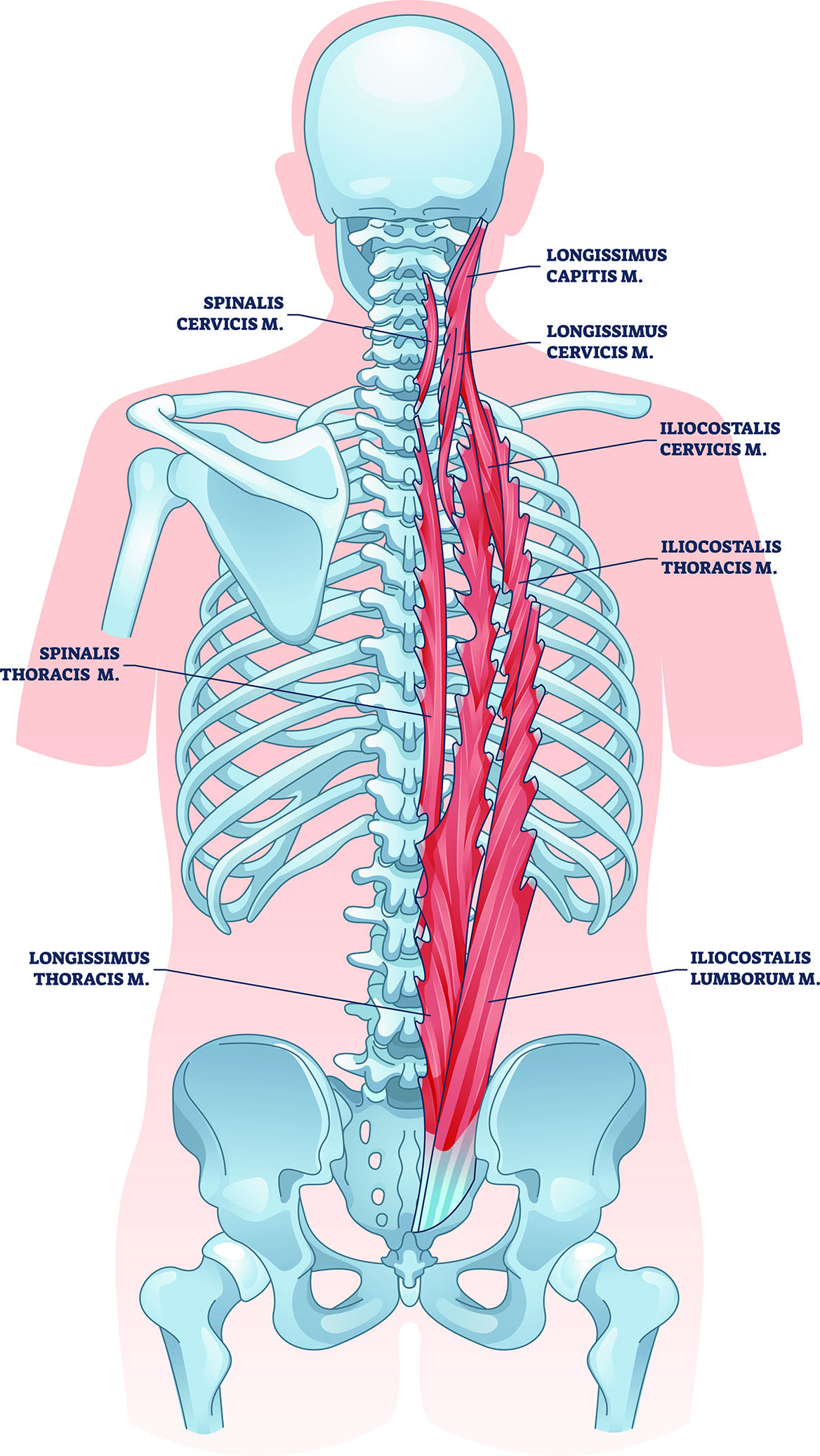
Erector spinae muscles
Get to know the muscles that are vital for protecting your spine and preventing back pain.
- Anatomy: Erector spinae are three sets of parallel diagonal muscles rising in sequence from your sacrum, iliac crest (tip of your hip bone), sides of the spine and ribs. They end, again in sequence, on your ribs, sides and back of the spine, finishing on back of your head (occipital bone).
- Action: Extend and laterally flex the spine (bending backwards and sideways)
- Everyday use: Maintains the natural curves of the spine
- Sports use: All sports, but especially swimming and gymnastics
- Common problems: Injuries from not keeping the back straight when lifting
- Stretching poses: Bridge or wheel, child’s pose, knees to chest
- Strengthening poses: Cobra, up-dog, locust, chair, banana (yin)
Best yoga poses to stretch & strengthen your back
Before trying these yoga poses to strengthen your back, start with a back-focused warm-up. Lie face up and sense the ground beneath you. Spend a few minutes breathing deeply and noticing how your back feels.
Next, lower your knees to one side, pause, then switch to the other side. Return to centre, hug alternate knees to your chest for a few breaths, keeping the other leg extended on the ground then, hugging both knees, do a few gentle back rolls, forwards and back, then side to side. Finally, flow back and forth between child’s pose and low cobra a few times.
For the main sequence, perform each pose in order, remaining for five-to-10 deep breaths, unless otherwise indicated, and repeat on both sides of the body, if needed. Finish with a few minutes in savasana or legs up the wall.
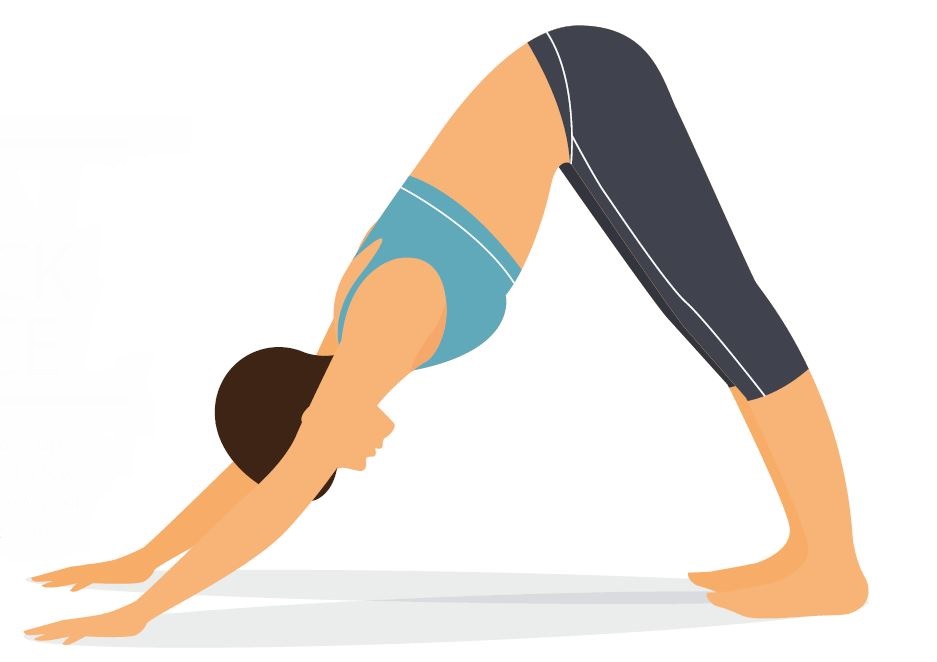
Downward dog
- Good for: Releases tension in the back, calms the nervous system, eases fatigue, stretches the hamstrings
- Back focus: Latissimus dorsi lengthens, erector spinae engages. Upper trapezius stretches while mid and lower trapezius engage to stabilise the shoulder blades.
- Alignment: Hands shoulder-width apart, fingers spread. Root through base of thumbs and fingers. Externally rotate your upper arm, shoulders drawing down back. Lift your tailbone up and back, taking your chest to your thighs and gently release your neck.
- Make it easier: Try half-dog. Rest hands hip height against a wall, back horizontal, feet below hips. Reach tailbone back to lengthen your spine.
- Make it harder: Raise alternate legs for three-legged dog, and hold for five deep breaths.
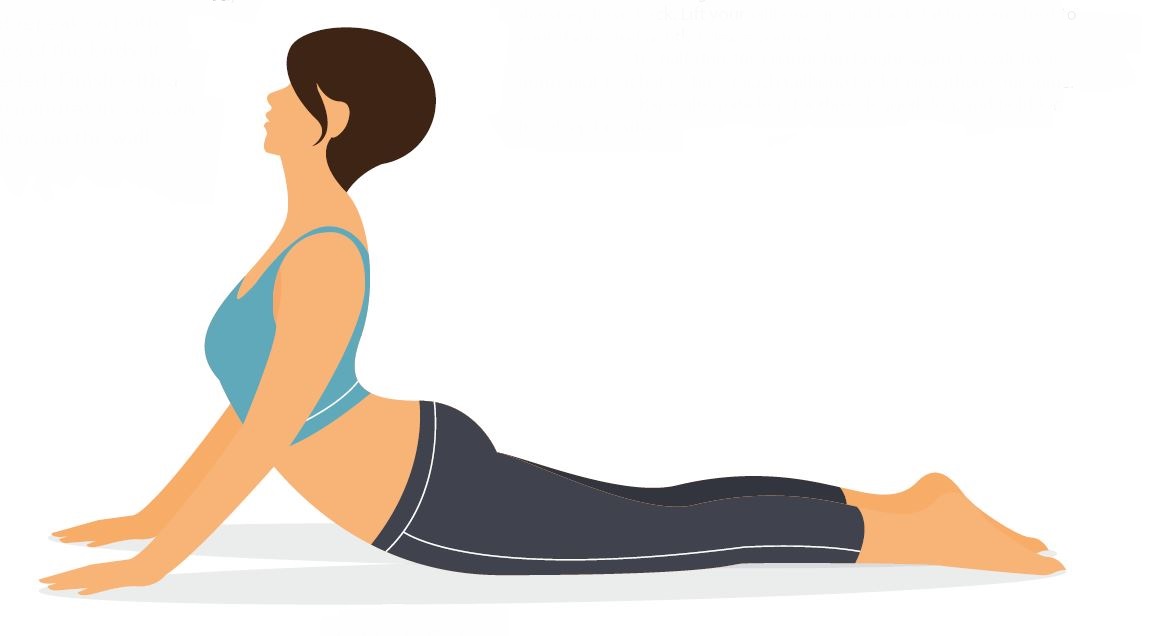
High Cobra
- Good for: Eases tension and pain in the back, strengthens the spine, relieves stress and fatigue.
- Back focus: Your upper trapezius draws the neck back while the mid and lower sections take your shoulder blades closer to your back. Erector spinae and quadratus lumborum extend the spine.
- Alignment: Root through your pubic bone, base of thumbs and index fingers. Draw your elbows in and rotate your shoulders up, back and down. Take your navel to your spine and exhale to rise, leading with the back of your neck.
- Make it easier: Rest on your forearms for dolphin pose.
- Make it harder: Raise your pubic bone to come into up-dog.
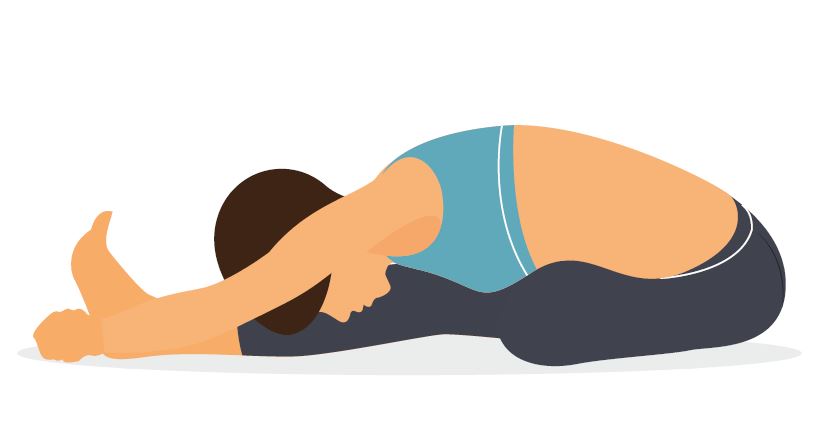
Head to knee pose
- Good for: Improves circulation in the spine, relieves lower back tension, strengthens and stretches the back.
- Back focus: Gentle stretch for erector spinae and strong stretch for quadratus lumborum.
- Alignment: With right leg straight and left bent, draw your right hip back and left hip forward to square hips. Inhale and root through sitting bones to lengthen your torso, exhale to fold forwards, eventually taking head towards your knees, hands to shins or ankles. Draw shoulder blades down and back. Rest for up to a minute, release and repeat on other side.
- Make it easier: Rest your head on a bolster (or cushion) placed over your extended leg.
- Make it harder: Wrap your hands around your feet (pictured).

Locust
- Good for: Strengthens the back, buttocks and thighs.
- Back focus: The whole of the back engages, including mid and lower trapezius, which draw the shoulder blades together. Latissimus dorsi extends the shoulders, while erector spinae and quadratus lumborum power the lift.
- Alignment: Inhale as you lengthen through the crown, draw your shoulder blades together and raise your head, shoulders and arms, gazing forwards, and creating an even curve from hips to crown. Exhale to raise your legs, toes pointed.
- Make it easier: Raise legs and upper body separately at first, combining the two as your strength develops.
- Make it harder: Grasp your feet with hands for bow pose.

Bridge
- Good for: Strengthens back and buttocks, improves posture, eases lower back pain.
- Back focus: The mid and lower trapezius draw the shoulder blades together, while erector spinae and quadratus lumborum contract to arch the spine.
- Alignment: Keep feet directly below knees, knees hip-width apart and thighs parallel Rest your arms by your sides, and lift strongly through the chest. While keeping feet firmly on the mat, imagine you are drawing your heels towards your head.
- Make it easier: Rest an upright block under your sacrum.
- Make it harder: Tuck your shoulders under and clasp your hands together beneath your buttocks (pictured). Raise alternate legs and hold for five counts.
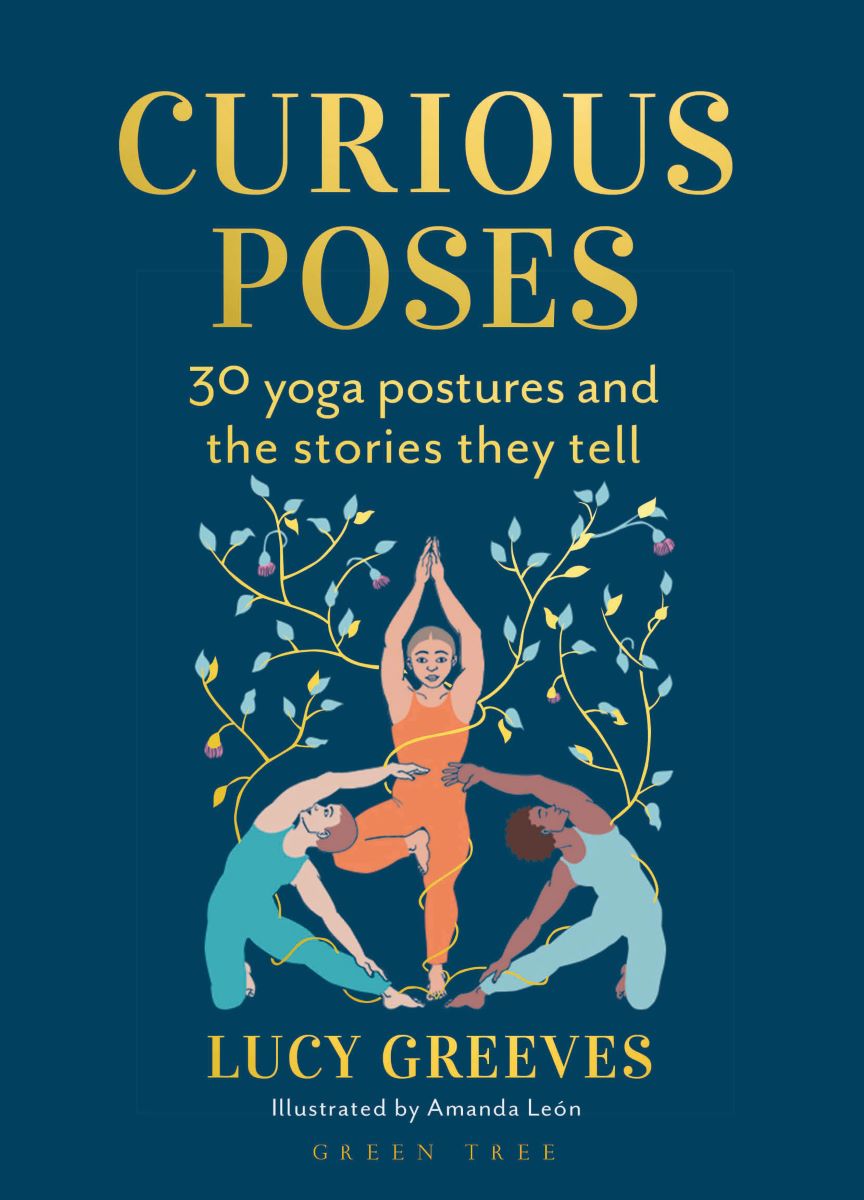 Further reading:
Further reading:
Curious Poses: 30 Yoga Postures And The Stories They Tell, by Lucy Greeves Green Tree, £12.99
Dip into this fascinating book to discover the origin and context of your favourite yoga poses. From the national flower of India that gives lotus pose its name, to the mythical Gods of the Bhagavad Gita that inspire the warrior poses, Greeves combines history, popular culture and practice notes to inspire your understanding of yoga, both on and off the mat.
Related: Best exercises to strengthen your lower back
Words: Eve Boggenpoel | Images: Shutterstock

